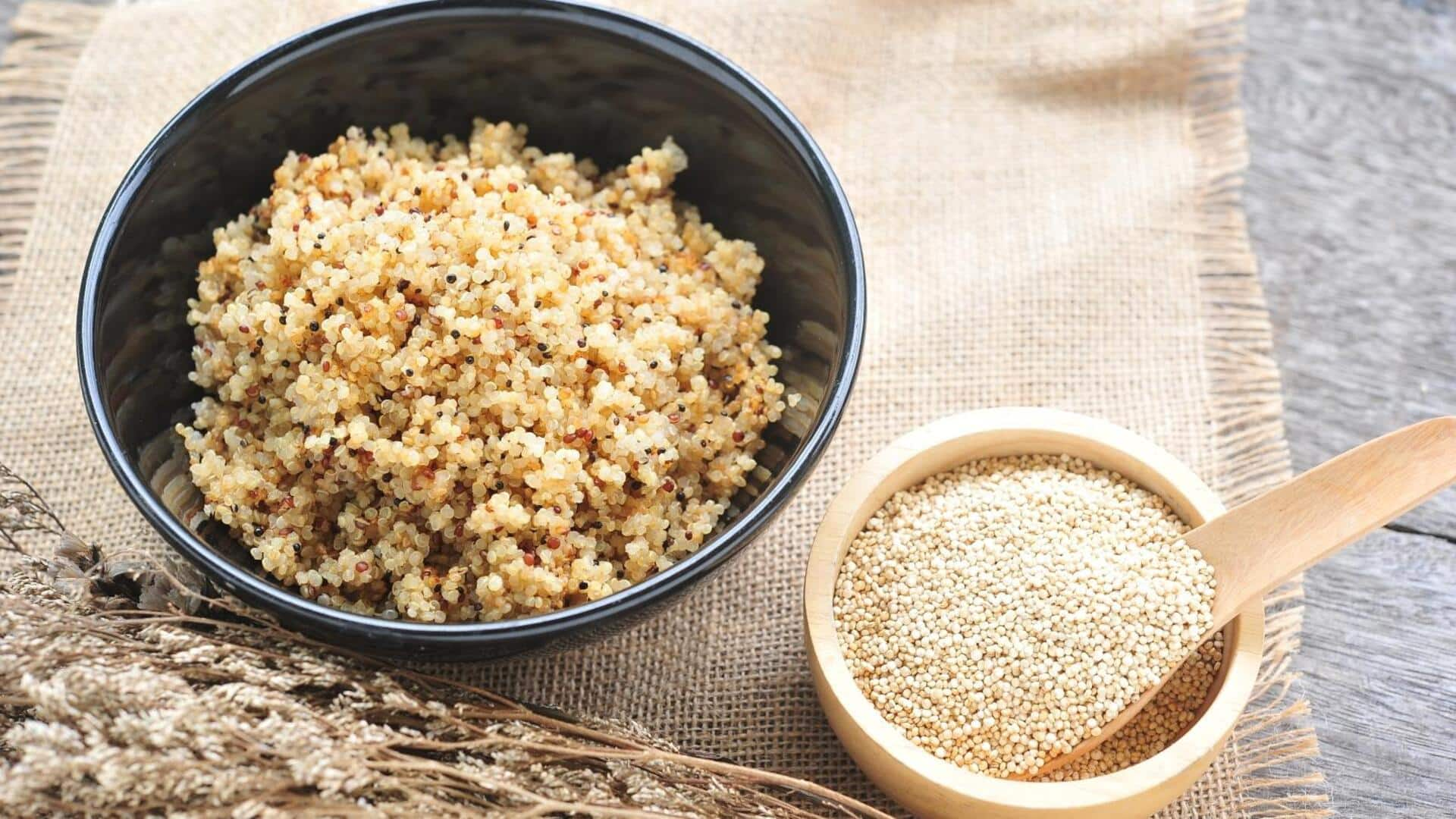
Quinoa v/s spelt: Comparing their nutritional profiles
What's the story
Quinoa and spelt are two of the most popular grains, both of which provide unique nutritional benefits. While quinoa is often praised for its protein content and gluten-free nature, spelt is known for its fiber and vitamin content. Knowing their nutritional profiles can help you make better dietary choices. Here, we look at the nutritional differences between quinoa and spelt, so you can make informed choices based on your dietary needs.
#1
Protein content comparison
Quinoa is famous for its high protein content, offering all nine essential amino acids. This makes it a complete protein source, which is rare among plant-based foods. Spelt, on the other hand, has a decent amount of protein but doesn't provide all essential amino acids in the same proportion as quinoa. If you're looking for a plant-based complete protein source, quinoa would be the better choice.
#2
Fiber levels in grains
Both quinoa and spelt are good sources of dietary fiber, which helps with digestion and keeps you healthy in general. Spelt has more fiber than quinoa, which makes it a good choice if you're looking to improve your digestive health or control your weight with fiber-rich foods. However, quinoa still offers a good amount of fiber that can help you with your daily intake.
#3
Vitamins and minerals analysis
Quinoa is rich in magnesium, iron, and B vitamins like folate and riboflavin. These nutrients are important for energy production and keeping your bones healthy. Spelt also offers a range of vitamins such as niacin and thiamine, along with minerals such as zinc and copper. Although both grains provide essential nutrients, they differ in their vitamin compositions.
Tip 1
Gluten content considerations
Quinoa is naturally gluten-free, making it a perfect option for those with celiac disease or gluten sensitivity. Spelt, however, contains gluten but has a lower amount than modern wheat varieties. Some people with mild gluten sensitivities may tolerate spelt better than regular wheat products, but it is not suitable for anyone with celiac disease.